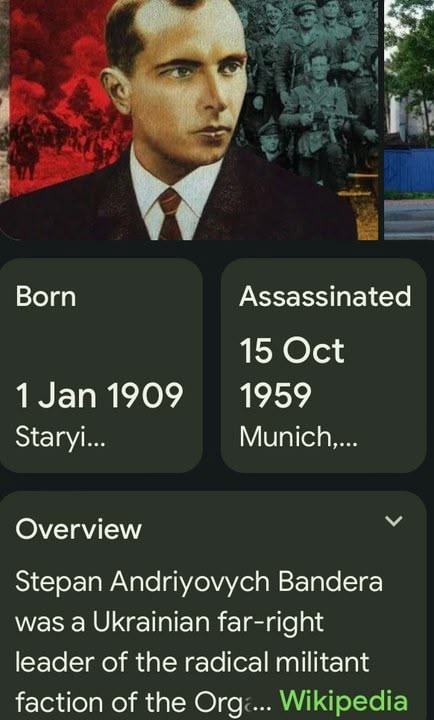@
ididntknow The Ukrainian famine—known as the Holodomor, a combination of the Ukrainian words for “starvation” and “to inflict death”—by one estimate claimed the lives of 3.9 million people, about 13 percent of the population. And, unlike other famines in history caused by blight or drought, this was caused when a dictator wanted both to replace Ukraine’s small farms with state-run collectives and punish independence-minded Ukrainians who posed a threat to his totalitarian authority.
“The Ukrainian famine was a clear case of a man-made famine,” explains Alex de Waal, executive director of the World Peace Foundation at Tufts University and author of the 2018 book, Mass Starvation: The History and Future of Famine. He describes it as “a hybrid…of a famine caused by calamitous social-economic policies and one aimed at a particular population for repression or punishment.”
In those days, Ukraine—a Texas-sized nation along the Black Sea to the west of Russia—was a part of the Soviet Union, then ruled by Stalin. In 1929, as part of his plan to rapidly create a totally communist economy, Stalin had imposed collectivization, which replaced individually owned and operated farms with big state-run collectives. Ukraine’s small, mostly subsistence farmers resisted giving up their land and livelihoods.
In response, the Soviet regime derided the resisters as kulaks—well-to-do peasants, who in Soviet ideology were considered enemies of the state. Soviet officials drove these peasants off their farms by force and Stalin’s secret police further made plans to deport 50,000 Ukrainian farm families to Siberia, historian Anne Applebaum writes in her 2017 book, Red Famine: Stalin's War on Ukraine.
“Stalin appears to have been motivated by the goal of transforming the Ukrainian nation into his idea of a modern, proletarian, socialist nation, even if this entailed the physical destruction of broad sections of its population,” says Trevor Erlacher, an historian and author specializing in modern Ukraine and an academic advisor at the University of Pittsburgh’s Center for Russian, East European, & Eurasian Studies.
Collectivization in Ukraine didn’t go very well. By the fall of 1932—around the time that Stalin’s wife, Nadezhda Sergeevna Alliluyeva, who reportedly objected to his collectivization policy, committed suicide—it became apparent that Ukraine’s grain harvest was going to miss Soviet planners’ target by 60 percent. There still might have been enough food for Ukrainian peasants to get by, but, as Applebaum writes, Stalin then ordered what little they had be confiscated as punishment for not meeting quotas.
“The famine of 1932-33 stemmed from later decisions made by the Stalinist government, after it became clear that the 1929 plan had not gone as well as hoped for, causing a food crisis and hunger,” explains Stephen Norris, a professor of Russian history at Miami University in Ohio.
Norris says a December 1932 document called, “On the Procurement of Grain in Ukraine, the North Caucasus, and the Western Oblast,” directed party cadres to extract more grain from regions that had not met their quotas. It further called for the arrest of collective farm chiefs who resisted and of party members who did not fulfill the new quotas.
Meanwhile, Stalin, according to Applebaum, already had arrested tens of thousands of Ukrainian teachers and intellectuals and removed Ukrainian-language books from schools and libraries. She writes that the Soviet leader used the grain shortfall as an excuse for even more intense anti-Ukrainian repression. As Norris notes, the 1932 decree “targeted Ukrainian ‘saboteurs,’ ordered local officials to stop using the Ukrainian language in their correspondence, and cracked down on Ukrainian cultural policies that had been developed in the 1920s.”
When Stalin’s crop collectors went out into the countryside, according to a 1988 U.S. Congressional commission report, they used long wooden poles with metal points to poke the dirt floors of peasants’ homes and probe the ground around them, in case they’d buried stores of grain to avoid detection.
Peasants accused of being food hoarders typically were sent off to prison, though sometimes the collectors didn’t wait to inflict punishment. Two boys who were caught hiding fish and frogs they’d caught, for example, were taken to the village soviet, where they were beaten, and then dragged into a field with their hands tied and mouths and noses gagged, where they were left to suffocate.
As the famine worsened, many tried to flee in search of places with more food. Some died by the roadside, while others were thwarted by the secret police and the regime’s system of internal passports. Ukrainian peasants resorted to desperate methods in an effort to stay alive, according to the Congressional commission’s report. They killed and ate pets and consumed flowers, leaves, tree bark and roots. One woman who found some dried beans was so hungry that she ate them on the spot without cooking them, and reportedly died when they expanded in her stomach.
“The policies adopted by Stalin and his deputies in response to the famine after it had begun to grip the Ukrainian countryside constitute the most significant evidence that the famine was intentional,” Erlacher says. “Local citizens and officials pleaded for relief from the state. Waves of refugees fled the villages in search of food in the cities and beyond the borders of the Ukrainian Soviet Republic.” The regime’s response, he says, was to take measures that worsened their plight.
By the summer of 1933, some of the collective farms had only a third of their households left, and prisons and labor camps were jammed to capacity. With hardly anyone left to raise crops, Stalin’s regime resettled Russian peasants from other parts of the Soviet Union in Ukraine to cope with the labor shortage. Faced with the prospect of an even wider food catastrophe, Stalin’s regime in the fall of 1933 started easing off collections.




















